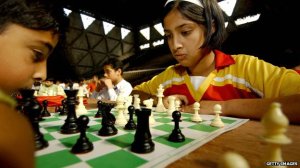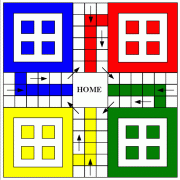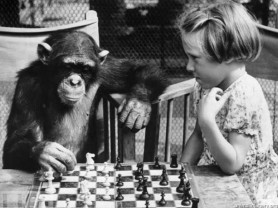
I’m now writing a brief, made-easy guide on the subject of thinking.
Yes, you’ve heard it right. But, don’t think too much about it…just yet. Please read what I have to say, and then think.
And no, it’s definitely not a condescending sermon. Rather, it’s a collective process of understanding, sharing and co-stimulation.
I could have titled this post: “You think you know how to think? Think so? Well, think again!” But that would’ve been too long for a title, and given people’s very short attention span these days, chances are, I would’ve lost a number of my precious readers. So, I used a simpler title. At least I thought I did. You think about it, and let me know. This is really about life’s multifaceted experiences.
So, the title is, “How To Think In 101 Ways.”

See, I already thought a few times over on this topic and how to use the best possible, attractive title so that readers who are now visiting my blog from all possible and impossible, incredible, wonderful corners of the world (believe me!) would actually take their precious time to read it. Not only that: I also cleverly imposed some task on you — to think along with me! But because you’re clever too, you’re not going to fall for my subtle imposition. I know you won’t. I only hope that you do it because you want to do it.
On a lighter note, just think: so much of my thinking went into writing the above, carefully crafted comment! It’s hard, man! Thinking is not easy.

(Like, Diane Chambers said about Sam Malone in Cheers, “He can’t think anymore today. He has already thought twice!”)
But more seriously, unlike Sam Malone who couldn’t think more than twice a day — if we gave the Harvard dropout Diane Chambers the benefit of the doubt (yet, if you knew Ms. Chambers, you ought to take her statements with a crazy grain of salt) — we the ordinary people think, have to think, or would like to think more than twice. In fact, we think quite often and frequently — just like the elite, rich, powerful and famous do.
Now, here is the problem. Sometimes, we even think without knowing we’re thinking. Sometimes, nothing concrete comes out of the thinking process. Sometimes, we get even more confused thinking! Because, in many cases, we are not thinking in an organized and planned way. That is where we could perhaps use some help: how to organize and refine our thinking.

I shall use the game of chess to explain my thoughts to you — in this brief time and space of a blog. Stay with me: you might find the next 1,200 or so words useful. At least, you could tell me that after thinking about what I said, you thought it was not useful. Like, you might say, my (i.e., yours truly’s) thinking was useless. Or, you might say, you had already thought what I thought: there’s nothing new. Either way, some organized and refined thinking would be involved, and, that would be good.
Now, without further ado, on with some chess.
In this movie (see poster here) called “Shatranj Ke Khiladi” (The Chess Players, 1977), a story written by the great Hindi-Urdu writer Munshi Prem Chand, Satyajit Ray the genius film director used a number of layers of themes, sub-themes, imagery, symbolism and metaphors to tell the story. I won’t bother you with the intricate details of the movie here: you can click on the link I provided above and look it up. Very briefly, the story talks about social problems and political problems using the backdrop of a slow and laid-back, pre-British feudal, Muslim-ruled India; it also talks about personal issues and national issues. The various layers in the story intertwine and blend. And the master filmmaker takes high artistic liberty to create one of his best creations; a political story easily turns into a personal story, and vice versa. The game of chess and two chess-addict patriarchs become the unifying thread throughout the length of the movie.
You watch the movie, and then you come back and watch it again…and again. Why? Because the movie makes you think. It makes you think more. And it makes you think harder. You need to take the time — a lot of time — to peel away the layers of the story line, one layer at a time.
You think about the people in it. You think about the places in it. You think about the politics in it. You think about the society in it. You think about the issues and problems in it. You think about the short-term problems. You think about the mid-term problems. And then you think about the long-term problems.

And then you think about all the consequences of these people’s deeds, actions, mis-actions and inactions. You put yourself in the movie — as if you are a character in it too — and you try to find perhaps alternative solutions to the problems the movie poses — both on the personal and collective and social fronts. Would you do things differently? Could you do things differently? Do you feel any urge to do anything at all?
At the end of the day, that’s really the essence of the thinking process: to get into some action. Then, in order to get into and on with an action, you need an action plan.
If you think in an organized way, and make plans while thinking, your action is bound to be effective and meaningful — to produce positive results. That’s the beauty of organized and refined thinking process.
It’s like eventually trapping or checkmating your opponent’s king in that little game of chess.
(I shall write more. Please come back.)
Still Learning the Craft of Thinking,
Partha
Brooklyn, New York
###
